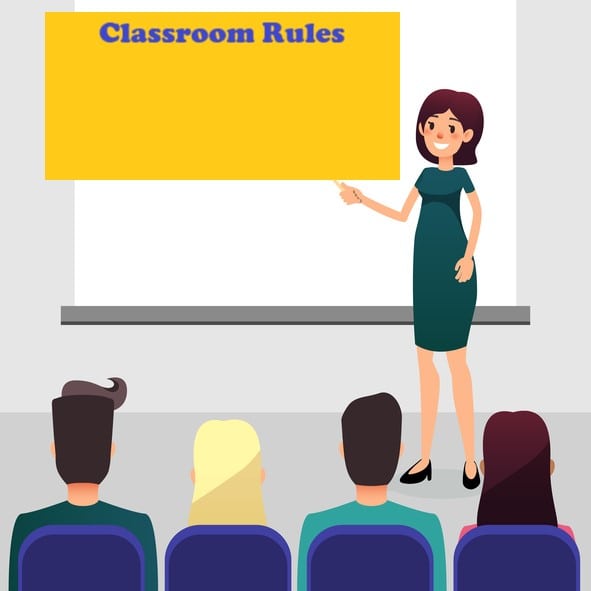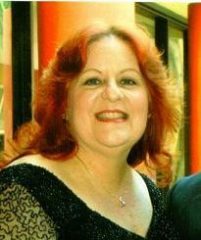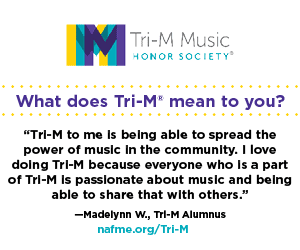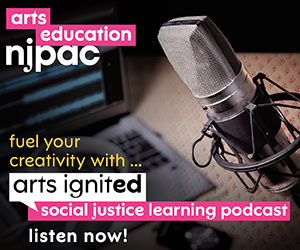/ News Posts / Five Must-Haves for a Successful School Year
Five Must-Haves for a Successful School Year
Toward a Smooth Transition from Summer to Fall
By NAfME Member Audrey Carballo
It’s that time of year when teachers ask . . . Back to school? Already?!?! Although for most traditional school calendars educators get 8-10 weeks of summer, it never seems to be enough. If you’re like me, the week before we head back gets tainted as well. Every day I gently gripe that this is the last (insert day of the week here) I have off—to the point that by the time the big day rolls around, I am completely bonkers!

To make the transition even easier, here are five must-haves that are guaranteed to bring you a successful school year.
A Goal Without a Plan Is Just a Wish
These words could not be truer for the education community. In fact, they are of such paramount importance that every school district demands teachers compose (see what I did there??) lesson plans. Most entities allow flexibility depending on whether you write daily, weekly, or beyond. But, I have not run across any instructional setting that does not require their teachers NOT to have lesson plans at the ready.

If you are lucky, you will be teaching the same subjects as last year or years prior. I never throw out old lesson plans. If they were successful, why reinvent the wheel? Think reincarnation. Use them or adapt them into your current setting. I highly suggest making a fillable or clickable template that allows you to check off objectives, activities, and assessments easily. You need to do this only once. Then, you are ready to change or modify with a minimum amount of effort.
Don’t Reinvent the Wheel
Same and different are divergent ends with a common beginning. At some point, the journey deviates and the end points differ but the start is the same. How this plays out in planning for the year simply means you can use the same basic plans the following year, provided you are teaching the same grade level, ensemble, or population. I used to write different plans every school year and one summer it hit me—why am I making more work for myself? I certainly have enough work to do from the get-go.

In an elementary setting, the school year plays out the same every year. I hit a different main concept every month or so. September is our get acquainted month. I review the Star-Spangled Banner and our school song. October is the ideal month to introduce the concept of major and minor and so on. At the same time, I’m instructing the major concepts, I choose a composer to highlight. I use one of their pieces during instruction, and then we see a video about their life. Lesson plans are living documents. Don’t be afraid to lay down the basics and revise as needed.
Lesson plans are living documents. Don’t be afraid to lay down the basics and revise as needed.
Save Your Voice—Use PowerPoint Presentations
Four years ago, I created two PowerPoint presentations. One outlined everything I wanted to say to my elementary students, and one was geared towards my middle school classes. In prior years, I would wind up with a sore throat or even worse—get laryngitis—due to the amount of concentrated talking I was doing during the first week of school. Never again!

I use the presentation to introduce class expectations, rules (rewards and consequences), fire drill procedures, make-up work for absences, needed supplies, etc. You can include anything you want to say. For the little ones, use eye-catching graphics and music. For the older grade levels, make the presentation age-appropriate.
This has been a godsend for me. I deliver all the necessary information, and my vocal cords remain unharmed. The overwhelming comment from students was they liked it. “All teachers do the first day is talk,” they said. “It’s really boring, and I forget half the things they tell us.” Digest that comment for a moment. You think you’re doing a killer job up there, and your students can’t wait until you shut up!!
Be Efficient—Enter the Cloud
Bill Gates is credited with saying, “I choose a lazy person to do a hard job, because a lazy person will find an easy way to do it.” That’s me. I hate wasting time. I always try to find the quickest way to accomplish my goal with a minimal amount of effort. Don’t get me wrong. I’m a tornado in the classroom. I’m all over the place, and I never sit still. My kids never know where I’ll be next. But, that doesn’t mean I constantly waste precious hours of my life redoing tasks over and over again.
Unless your last name is Flintstone, you probably have a smartphone or tablet or computer that you use daily. Cloud storage is a natural extension of these devices. Utilize them. DropBox, Google Drive, Mega, OneDrive, and iCloud are just a few of the many, many providers available. Some offer a limited amount of free storage, and most offer upgraded plans.
I pay for one terabyte of storage with Dropbox. I have 37 years’ worth of music from shows, lesson plan templates, letters to parents, and so forth. When I need to inform parents of the upcoming Winter Show, I simply retrieve the document I wrote before and tweak it with this year’s information.
Why do you want to knock yourself out writing basically the same letter year after year? Get smart and save your docs, music and info to the cloud!
Maintain a Website for your Music Program
I invested in having a website that hosted my class information for years. Mine is hosted on Educatorpages.com. There are other sites such as ClassDojo, Edmodo, Nearpod, Edsby, and Google Classroom, just to name a few. Some are free—with limits on how many pages you can access. Some offer an upgrade and, usually, the cost is minimal.

I wanted a template in which I could plug my own classroom information. Most sites will give you a 30-day free trial. I happened to choose Educatorpages.com because it offered me the most flexibility in terms of what I could upload to the site and the number of pages I wanted. The current price for a year’s subscription is around $35 per year. I’d gladly pay double.
Free plans usually won’t offer help or support creating your site. Some won’t allow pics or lots of uploads. Go premium—it’s worth it. You can upload pics of your latest concert or feature a student of the month. Almost every site had an email feature, so you can be contacted. I use mine on a daily basis and can tweak it at any time. It’s well worth the monetary investment you make.
About the author:

Audrey Carballo, a 37-year NAfME member, is in her 37th year as a music educator for the Miami-Dade County Public Schools system, the fourth largest school system in the country. Her teaching experiences include general music, exploratory music, and chorus to regular and exceptional students in elementary, middle school, high school, and exceptional student settings.
She has been an Assessor for the National Board for Professional Teaching Standards and currently serves on the National Education Association Member Advisory Board Panel and as the Union Steward and Chairperson of the Educational Excellence School Advisory Board Council at her school. Recently, Audrey was the Children’s Choir Director for the Miami Music Project, which is an El Sistema program spearheaded by the world renowned conductor, James Judd.
One of her most rewarding experiences has been with the Miami Lighthouse for the Blind and Visually Impaired. In addition to teaching Broadcast Journalism classes, and giving private lessons in voice, composition, theory and piano, her duties included being the Vocal and Advanced Theory instructor for their Better Chance Music Production Program. Audrey was one of the co-authors of an article published in the Journal of Visual Impairment and Blindness titled, “A New Synthesis of Sound and Tactile Music Code Instruction: Implementation Issues of a Pilot Online Braille Music Curriculum.”
Audrey collaborated with Jin Ho Choi (another instructor at the Lighthouse) for nine months, creating their Braille Music Distance Learning course. Follow Audrey on Twitter @scarlettfeenix.
Did this blog spur new ideas for your music program? Share them on Amplify! Interested in reprinting this article? Please review the reprint guidelines.
The National Association for Music Education (NAfME) provides a number of forums for the sharing of information and opinion, including blogs and postings on our website, articles and columns in our magazines and journals, and postings to our Amplify member portal. Unless specifically noted, the views expressed in these media do not necessarily represent the policy or views of the Association, its officers, or its employees.
Published Date
August 17, 2018
Category
- Classroom Management
- Educational Topics
Copyright
August 17, 2018. © National Association for Music Education (NAfME.org)




